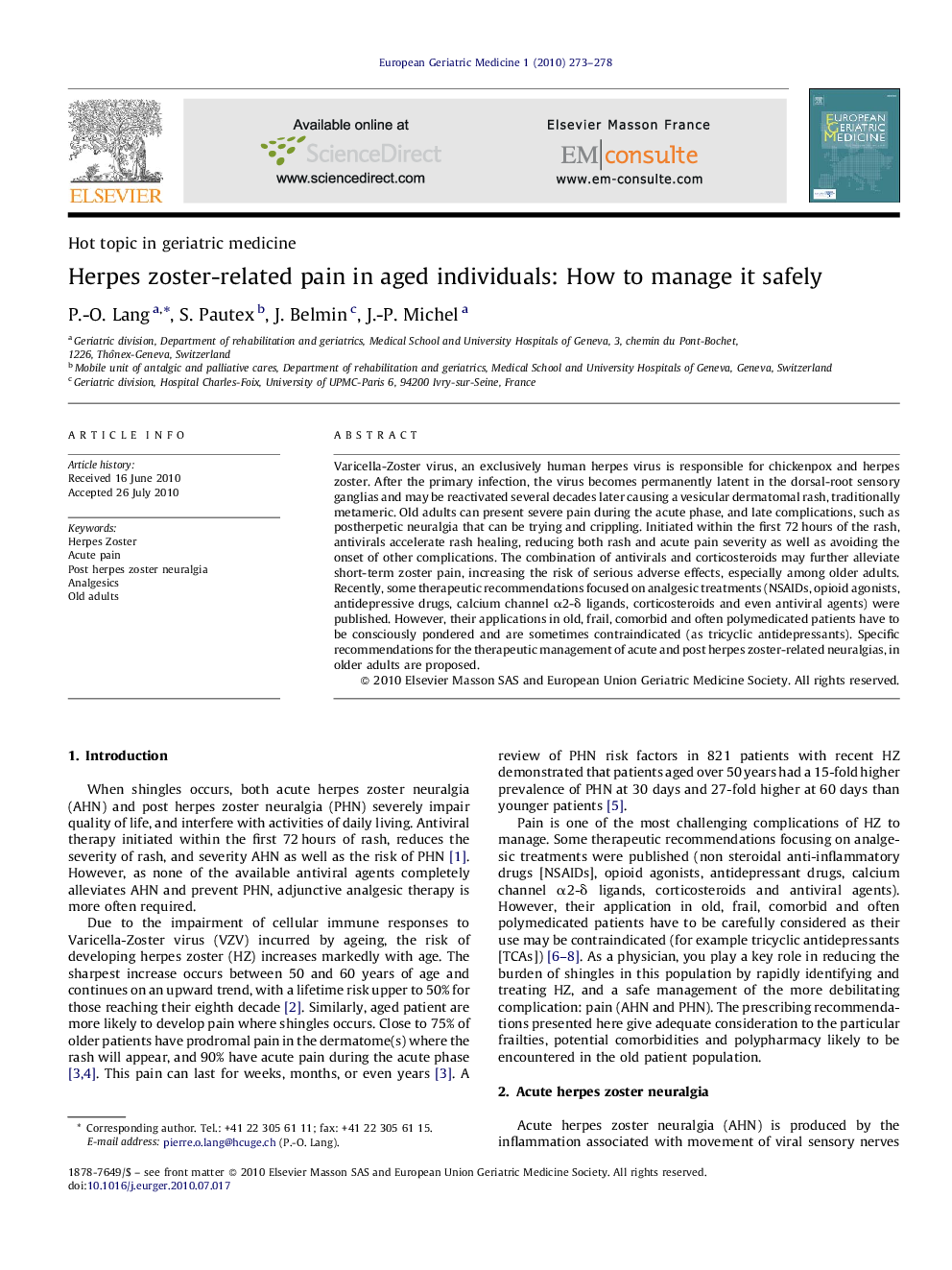| Article ID | Journal | Published Year | Pages | File Type |
|---|---|---|---|---|
| 3324760 | European Geriatric Medicine | 2010 | 6 Pages |
Varicella-Zoster virus, an exclusively human herpes virus is responsible for chickenpox and herpes zoster. After the primary infection, the virus becomes permanently latent in the dorsal-root sensory ganglias and may be reactivated several decades later causing a vesicular dermatomal rash, traditionally metameric. Old adults can present severe pain during the acute phase, and late complications, such as postherpetic neuralgia that can be trying and crippling. Initiated within the first 72 hours of the rash, antivirals accelerate rash healing, reducing both rash and acute pain severity as well as avoiding the onset of other complications. The combination of antivirals and corticosteroids may further alleviate short-term zoster pain, increasing the risk of serious adverse effects, especially among older adults. Recently, some therapeutic recommendations focused on analgesic treatments (NSAIDs, opioid agonists, antidepressive drugs, calcium channel α2-δ ligands, corticosteroids and even antiviral agents) were published. However, their applications in old, frail, comorbid and often polymedicated patients have to be consciously pondered and are sometimes contraindicated (as tricyclic antidepressants). Specific recommendations for the therapeutic management of acute and post herpes zoster-related neuralgias, in older adults are proposed.
